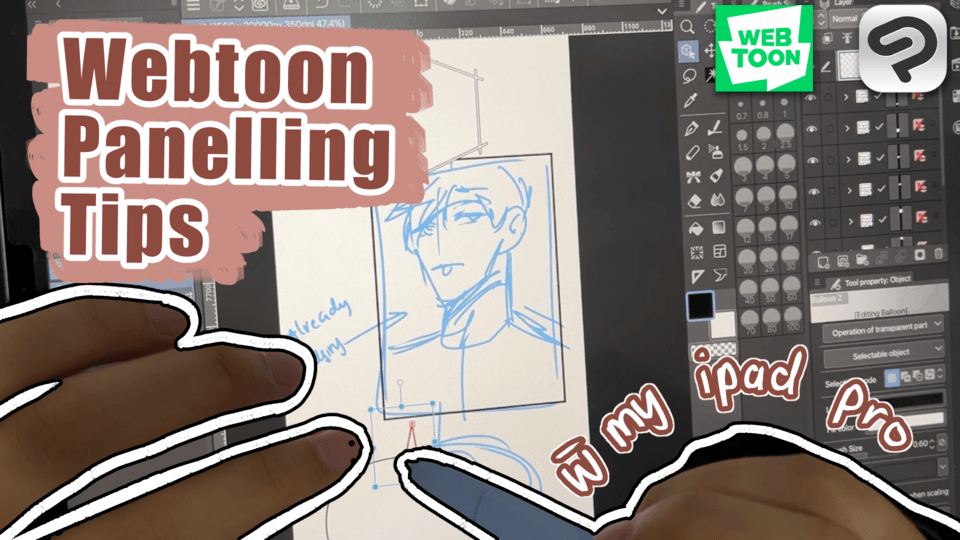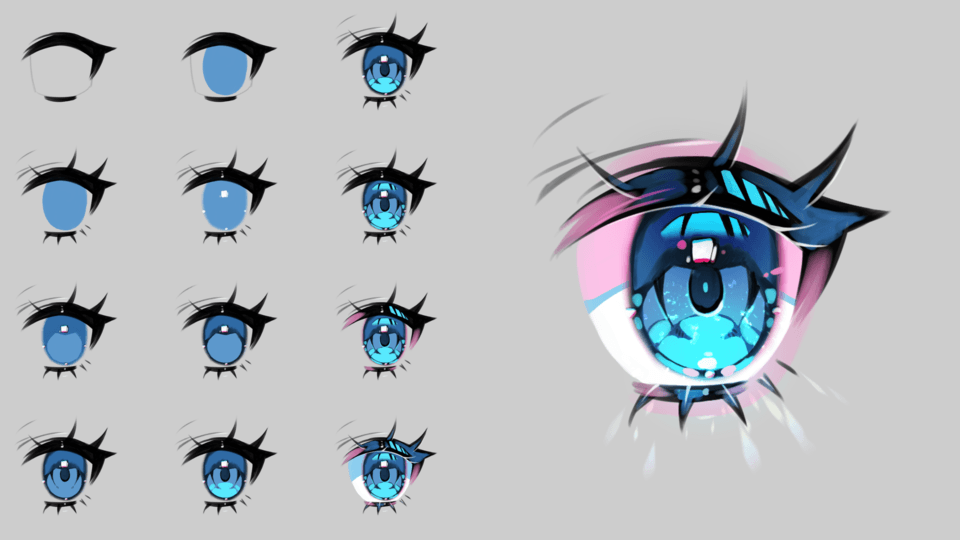Share your process on SPEEDPAINT!
Hi! I am Ada, known on Instagram and other social networks as @Diadantist. And I use social media to upload my drawings and eventually become a 2D animator!
And I'm going to show you how to make the most of Clip Studio's "Timelapse" tool for your drawings, and publish your WIPs online!
PS: There are many recording programs to show your process, but I am going to focus on the main tool that Clip Studio offers, since it has a series of advantages that I will explain in this tutorial. It is to the taste of each artist!
1. Timelapse for your works!
Timelapse is a very powerful Clip Studio function when it comes to recording the process of your drawings. Many people love to see the process; Not only for enjoying your work, but many other artists may be inspired by your drawing method.
This new tool will allow you to show your drawing from beginning to end!
After finishing your work, you can post the video of the process on the social network of your choice. You could even choose to broadcast your process on Twitch!
2. Preparing the canvas
To start recording your "Timelapse", the first thing you have to do is go to the File menu, until you find Timelapse. Once there, press "Record"! (File> Timelapse> Record)
A window will open warning you that this Timelapse will be saved along with the canvas. Watch out! This will make the file take up more space in your storage, so you may want to delete the file once you've finished your work.
This check means that it is already being recorded! Do not worry; Unlike screen recording programs, Clip Studio will only save your brush movements when you paint on the canvas of your artwork.
Don't worry about stopping midway! You can take a break, as it will not be recorded by the program and there will be no strange video clip left.
I will use one of my most recent works for this tutorial. It is about a girl looking out of the balcony on a beautiful summer afternoon. With very bright colors!
Now, it's your turn to draw and paint your work!
3. Export your Timelapses
Once your drawing is finished, it's time to export it. To do this, we are simply going to go to the same tab where "Burn" was. (File> Timelapse> Export)
A window will open showing many options for our video. Let's analyze it in detail:
In "Duration", we find the time that our speedpaint will last. This option offers to export it in 15, 30 or 60 seconds, in addition to the entire duration of the work.
If you want to upload your speedpaint to a platform that has a maximum of seconds like TikTok or Instagram, these first options are ideal for you!
In "Size", we will find the quality with which our speedpaint will be exported. You can choose between 1280, 1080 and 720 px. Choose the one that best suits what you are looking for.
And in "Proportion", we will find the "size" of our work. We can export it in different aspect ratios, such as:
16: 9 (most common ratio for televisions and HD, typically 1280x720p)
4: 3 (Traditional TV, almost quadrangular)
1: 1 (square)
9:16 (same format as the first, but in reverse)
And finally, the original of the work (canvas size).
Select the one that best suits what you are looking for!
4. Assembling your speedpaint - Clip Studio vs. other recording software
Clip Studio offers a number of advantages over other screen recording software. Among others, you will not need to increase the speed of the video in other editing programs such as Premiere or Sony Vegas, since your timelapses will come already compressed and accelerated according to the time you have chosen before! (15s, 30s, 60s or original speed)
If you want to see how long your video is in full length, just choose the option. In my case, it lasts exactly 8 minutes and 27 seconds.
Another great advantage of Clip Studio is the direct rendering of the work; you won't have to have two separate drawing files.
With Clip Studio and previously mentioned, the .clip file of your work will take up more space, but you will have the Timelapse inside this file so that you can access it whenever you want.
After finishing the rendering of your video, you will have it ready to upload to your social networks! I like to add something more to them in a video editing software, but that is already to the taste of each artist.
5. Details about the rendering of your speedpaint (performance and capacity of your computer)
Keep in mind that it depends on the option you have chosen, your computer will take more or less time to render your work.
You must have a computer or device that has enough capacity to process your works, or else it could overheat or fail! For this reason, always keep in mind what quality you are working on when drawing.
300pp is the standard quality for printing, and it is the one I recommend using for all your drawings, regardless of whether you are going to show a video or not.
If a single image already has a very large difference in weight, imagine the video of the process!
6. Save images during the process!
People love to see the process of a work of art. Regardless of the video, I always choose to save an image of the first and second sketch, the coloring and the final image. My followers like to see both versions, which is why I always include them at the beginning of my WIPs videos.
This is already the preference of each artist. I like to see how the process of each of my works is like, as well as I am inspired by how other artists draw and include certain aspects in my drawing style. And I'm sure many other people, too! Therefore, the Internet artistic community is a great place to learn and meet great artists.
7. ¡End!
I hope this little tutorial has cleared up some doubts about Clip Studio's timelapse feature! This recently added powerful feature is one of the best ways to share your drawing process.
I hope that with this, you get the recognition and visibility that your works deserve! Good work is always obvious, and people will want to see it. In addition, recording the process is always an interesting way to see how you previously drew, and to be able to look at your mistakes or what you could have done to improve your work. Learning is not just drawing, but looking at yourself, and others!
I would appreciate sharing this tutorial with your artist friends if you liked it, and don't forget to hit ♥! Good luck with your work, artist.
See you in another tutorial!
This drawing and many more I have published on my main account, @Diadantist, on Instagram. Take a look if you liked it!
Here is a video of my speedpaint process of my last two original works. I hope you like it! :)
























Comment